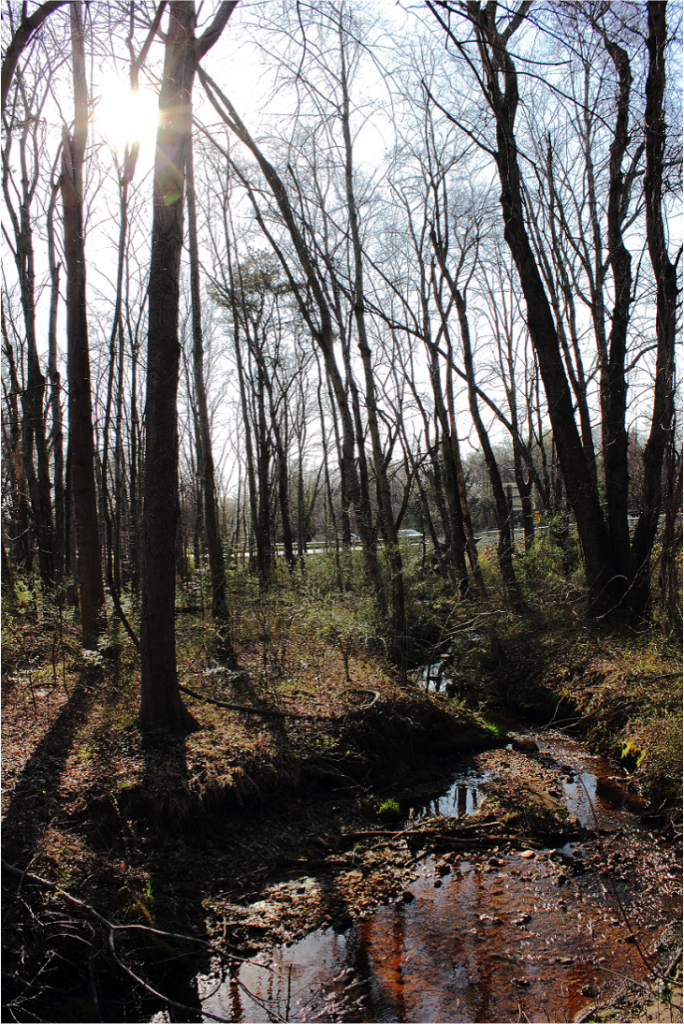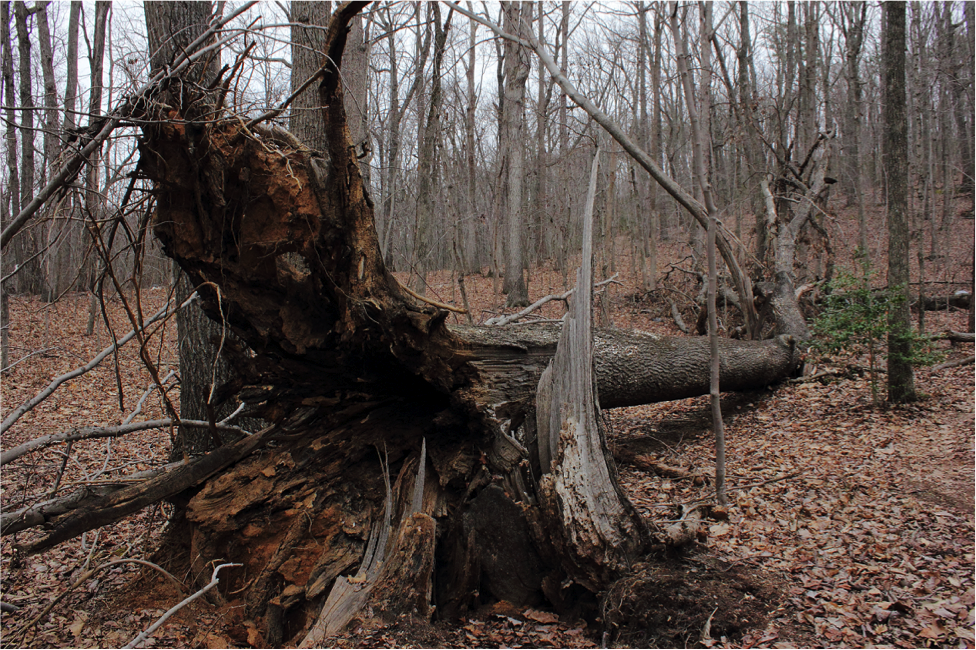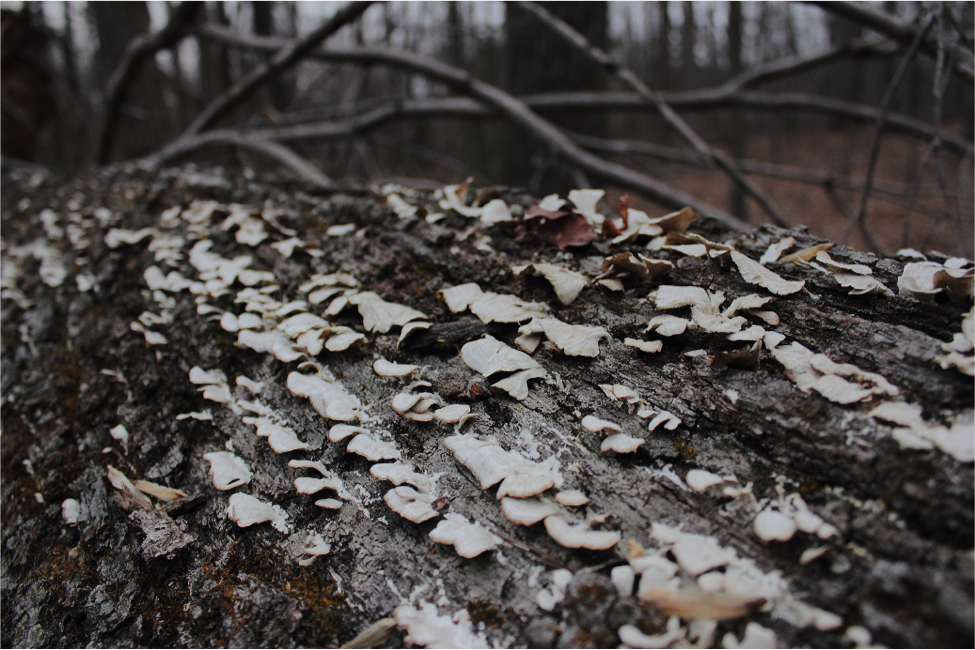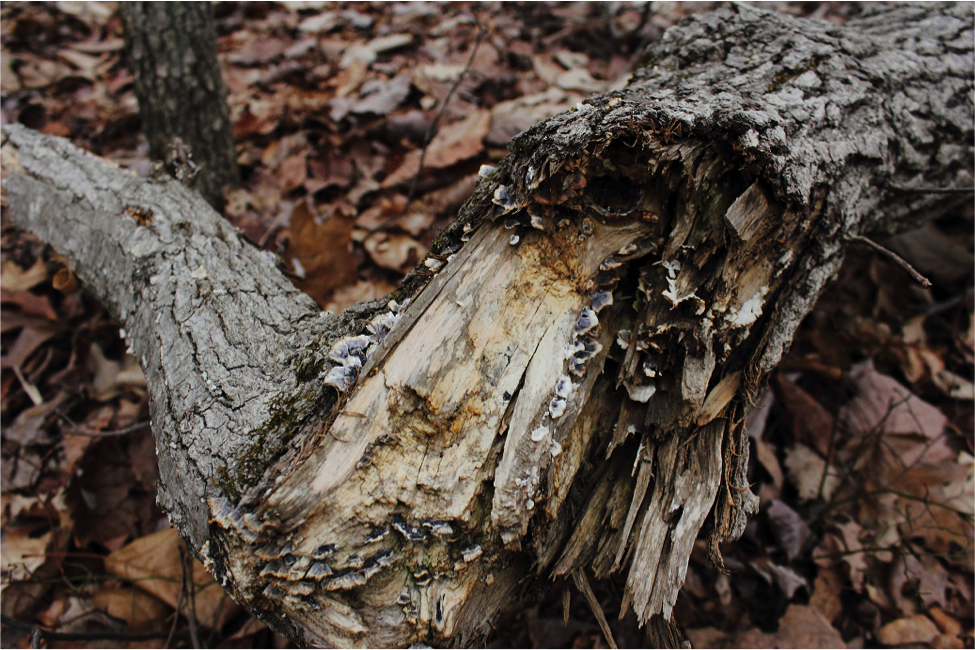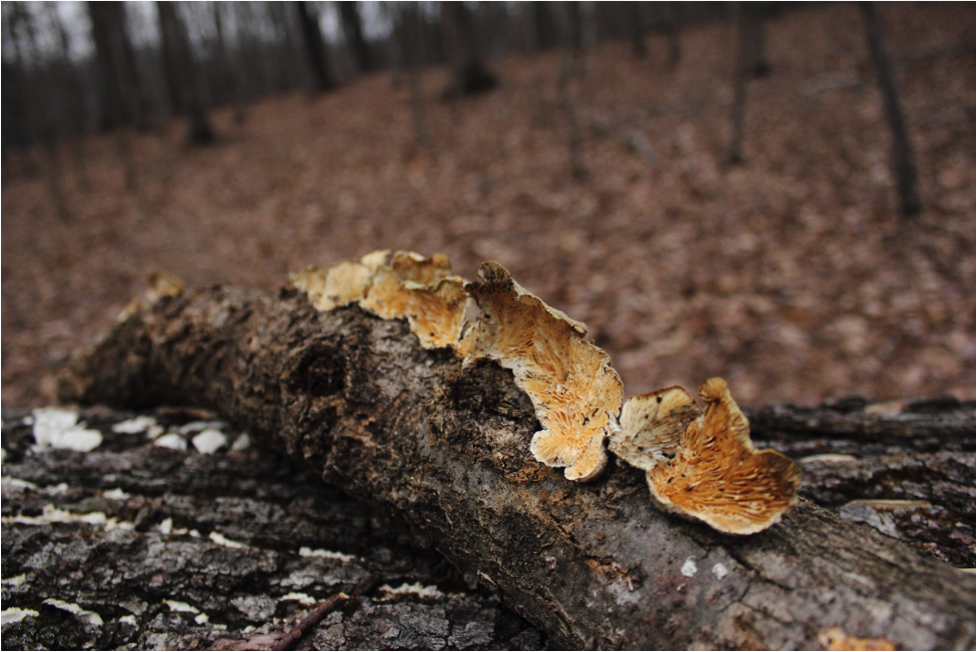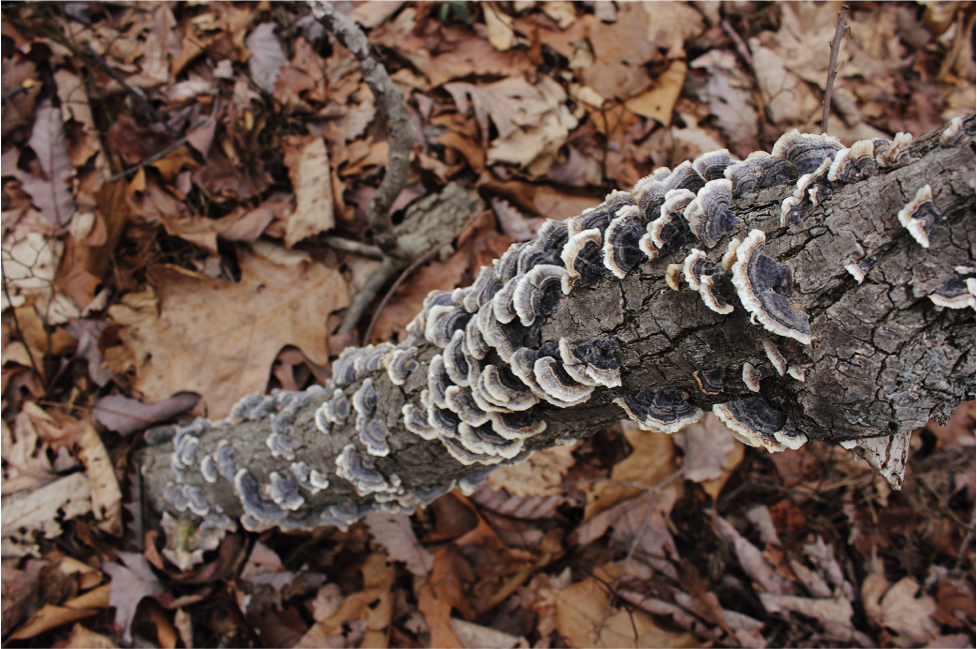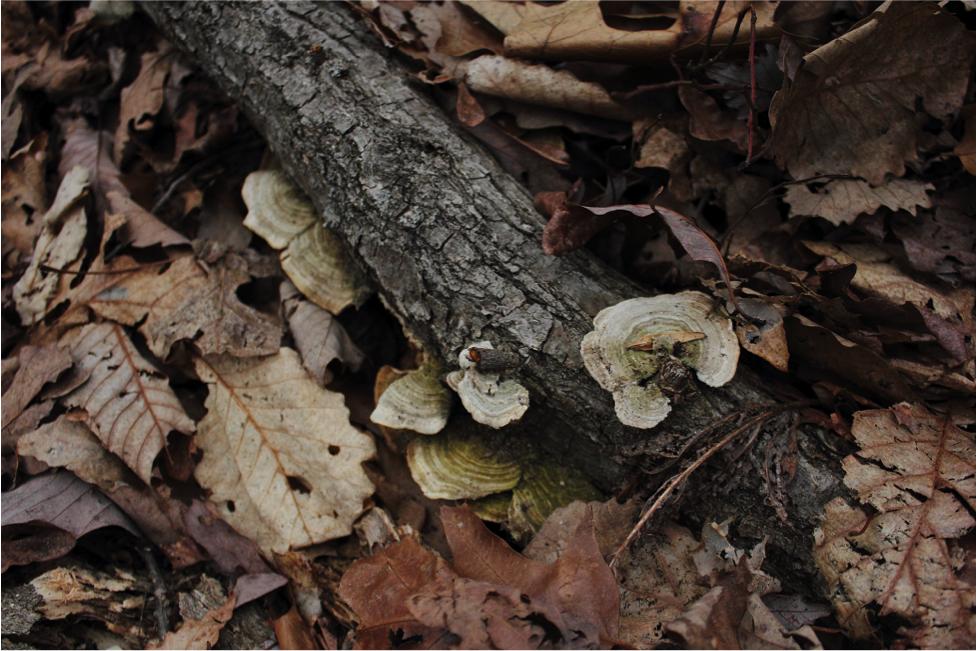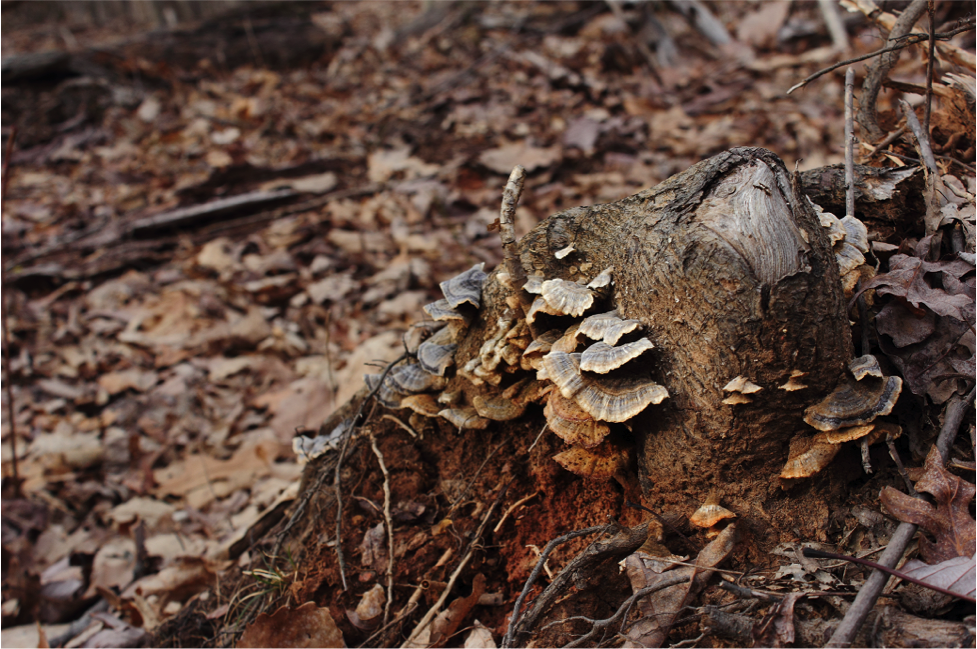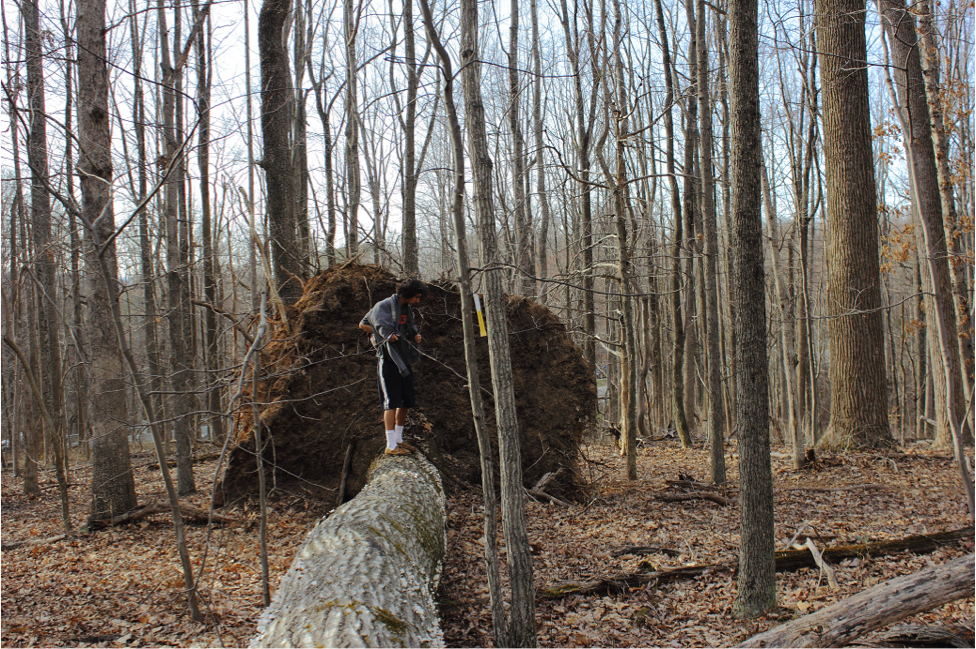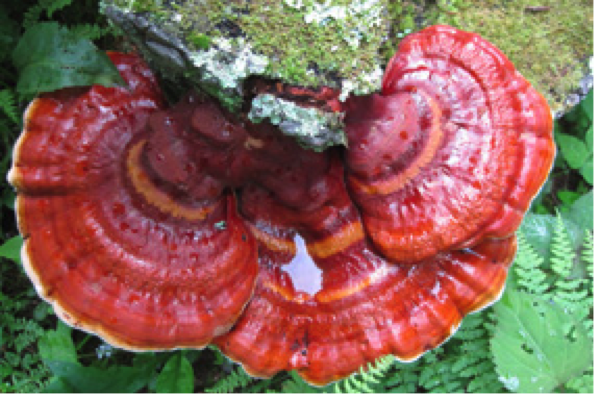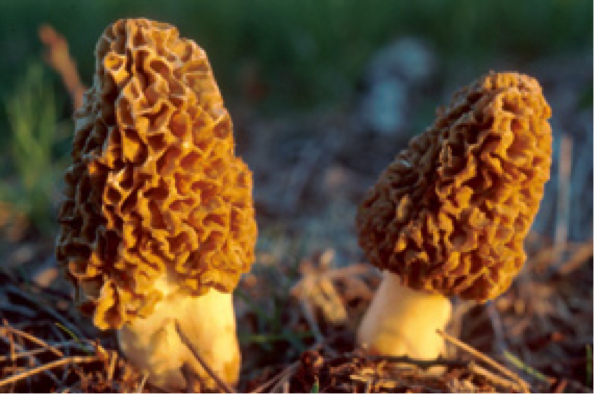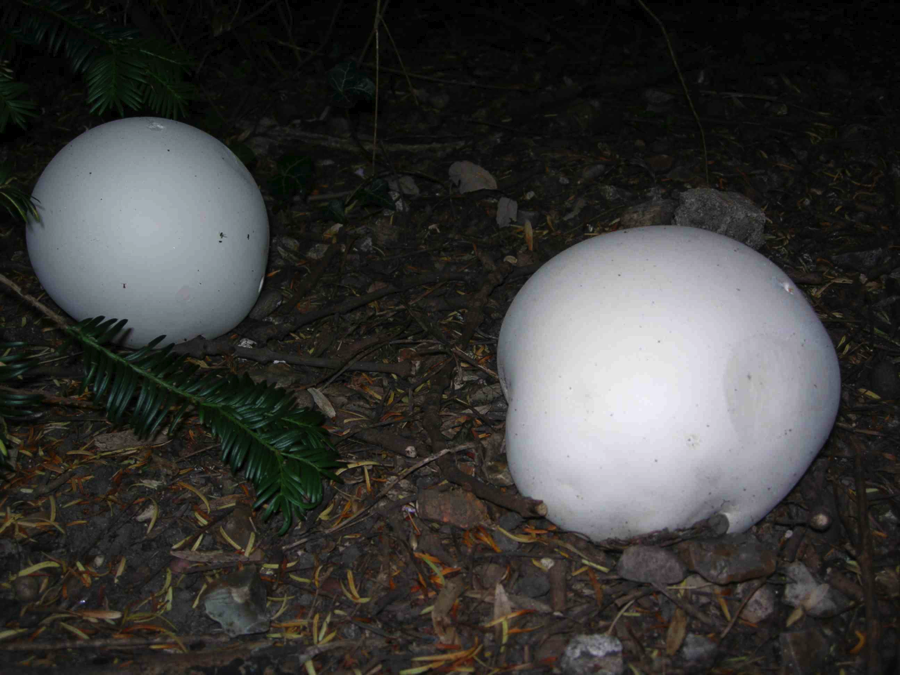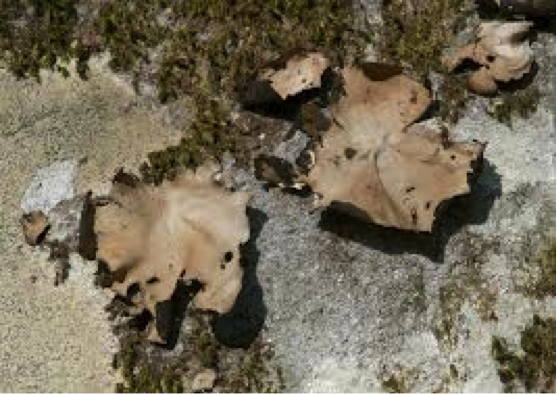With spring’s arrival, students and faculty of UVA are migrating from the indoors to out. For the runners, warm temperatures mean taking the exercise outside and getting back on the trails. The Rivanna Trail, in particular, is great for first years. It’s nearby (especially if you live in new dorms) and beautiful. With a ton of trees and different networks of streams trickling under bridges, the Rivanna Trail is a perfect place to run or take a walk.
My first time through the trail, a couple friends and I decided to take advantage of a warm, though cloudy, day. After exploring for about 20 minutes, we came across a giant fallen tree—its splintered roots lay taller than each of us.
I approached the trunk, and that’s when I noticed: shelf fungus.
Shelf fungus wasn’t just on the trunk; polypore mushrooms were in spots all around the tree, too.
As we made our way down the trail, we found fungi everywhere in the woods.
Fungi can be found on campus and, like we discovered, also at a short distance off campus. With finals approaching, I hope everyone can find some time to de-stress and enjoy the spring weather before summer starts—maybe even go on a fungi hunt in the woods.
